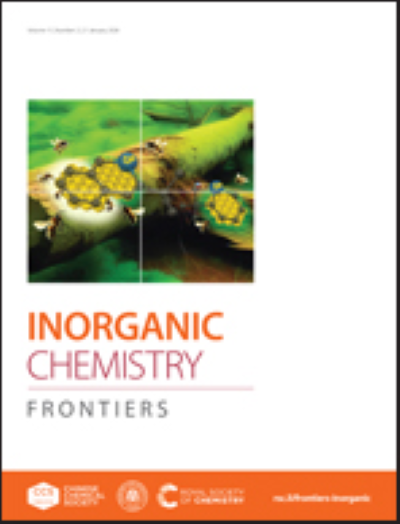Proton Coordination Chemistry in Pyrene-based Anode for Ultralong-life Aqueous Proton Batteries
IF 6.1
1区 化学
Q1 CHEMISTRY, INORGANIC & NUCLEAR
引用次数: 0
Abstract
Sustainable and safe aqueous proton batteries (APBs) have attracted significant attention owing to the unique “Grotthuss mechanism”. Although organic small molecules with stable and adjustable framework are promising electrode materials, their easy-dissolution in electrolyte and unsatisfactory intrinsic conductivity cripple the broader application in APB devices. Herein, the 2,7-diammonio-4,5,9,10-tetraone (PTO-NH3+) with the stable intermolecular hydrogen-bond networks is designed via the in-situ electrochemical reduction strategy, while the optimized molecule structure endows low charge transport barriers, high chemical reactivity, and prominent charge affinity. The fast kinetics of proton coordination/de-coordination behavior in PTO-NH3+ electrode is corroborated by ex-situ characterization techniques and theoretical calculations. As a result, the robust four-step 4e- H+ coordination with PTO-NH3+ electrode achieves an excellent rate performance (214.3 mAh g-1 at 0.05 A g-1, 112.9 mAh g-1 at 40 A g-1), along with a long lifespan (10000 cycles). These findings shed light on the further avenue towards advanced proton batteries.超长寿命水性质子电池中芘基阳极的质子配位化学
由于其独特的“Grotthuss机制”,可持续和安全的水质子电池(APBs)引起了人们的广泛关注。虽然具有稳定和可调节框架的有机小分子是很有前途的电极材料,但其易在电解质中溶解和不理想的固有电导率阻碍了其在APB器件中的广泛应用。本文通过原位电化学还原策略设计了具有稳定分子间氢键网络的2,7-二氨基-4,5,9,10-四酮(PTO-NH3+),优化后的分子结构具有低电荷输运势、高化学反应活性和突出的电荷亲和力。通过非原位表征技术和理论计算证实了PTO-NH3+电极中质子配位/脱配行为的快速动力学。因此,与PTO-NH3+电极的稳健的四步4e- H+配位实现了优异的倍率性能(0.05 a g-1时214.3 mAh g-1, 40 a g-1时112.9 mAh g-1),以及长寿命(10000次循环)。这些发现为进一步发展先进质子电池指明了方向。
本文章由计算机程序翻译,如有差异,请以英文原文为准。
求助全文
约1分钟内获得全文
求助全文
来源期刊

Inorganic Chemistry Frontiers
CHEMISTRY, INORGANIC & NUCLEAR-
CiteScore
10.40
自引率
7.10%
发文量
587
审稿时长
1.2 months
期刊介绍:
The international, high quality journal for interdisciplinary research between inorganic chemistry and related subjects
 求助内容:
求助内容: 应助结果提醒方式:
应助结果提醒方式:


